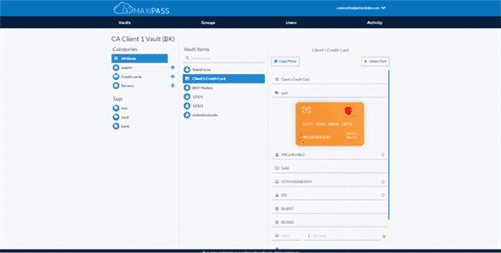This means that users can speak with the assistant in the same way they would a human agent and they will receive the same type of answers that a human would have provided. NLU, therefore, enables enterprises to deploy virtual assistants to take care of the initial customer touchpoints, while freeing up agents to take on more complex and challenging issues. There are various ways that people can express themselves, and sometimes this can vary from person to person. Especially for personal assistants to be successful, an important point is the correct understanding of the user.

According to Zendesk, tech companies receive more than 2,600 customer support inquiries per month. Using NLU technology, you can sort unstructured data (email, social media, live chat, etc.) by topic, sentiment, and urgency (among others). These tickets can then be routed directly to the relevant agent and prioritized. Today’s voice-first technologies are built with NLU, which is artificial intelligence centered on recognizing patterns and meaning within human language. When a computer understands what you mean to say without you having to ask it in one specific way, using your voice starts to feel like having an actual conversation.
Mind Reading AI – The Final Nail in the Coffin of Privacy?
In conclusion, for NLU to be effective, it must address the numerous challenges posed by natural language inputs. Addressing lexical, syntax, and referential ambiguities, and understanding the unique features of different languages, are necessary for efficient NLU systems. Natural Language Processing (NLP) techniques for deriving insights from unstructured data – text documents, social media posts, mail, etc. AI technology has become fundamental in business, whether you realize it or not. Recommendations on Spotify or Netflix, auto-correct and auto-reply, virtual assistants, and automatic email categorization, to name just a few. Text analysis solutions enable machines to automatically understand the content of customer support tickets and route them to the correct departments without employees having to open every single ticket.
- With Natural Language Understanding, contact centres can create the next stage in customer service.
- AI technology is not only useful in assisting call center managers to route calls more effectively, but it is also able to provide agents with the data and tools they need to create positive interactions with customers.
- Similarly, spoken language can be processed by devices such as smartphones, home assistants, and voice-controlled televisions.
- The earliest NLP applications were hand-coded, rules-based systems that could perform certain NLP tasks, but couldn’t easily scale to accommodate a seemingly endless stream of exceptions or the increasing volumes of text and voice data.
- But despite the many advances in NLU over the last decade, there’s still a ways to go before it’s reliably accurate.
Natural Language Understanding is a crucial component of modern-day technology, enabling machines to understand human language and communicate effectively with users. Natural language output, on the other hand, is the process by which the machine presents information or communicates with the user in a natural language format. This may include text, spoken words, or other audio-visual cues such as gestures or images.
Enhanced Business Intelligence
These embeddings half-opened the door to a new world by producing one embedding per word, without taking into account its semantic class. A few years later, we were able to train context-dependent embeddings (such as BERT and ROBERTa) where we could obtain an embedding for “Paris” as a person name and another embedding for “Paris” as a city name. These more complex embeddings are now widely—and successfully—used to fine-tune downstream tasks like named entity recognition. Here, “natural language” which refers to the most natural language human beings use to communicate since the age of two or three. The communication (also called “content”) produced is made available in its textual form—either spoken and further transcribed by speech recognition, by professionals or directly written. NLG systems enable computers to automatically generate natural language text, mimicking the way humans naturally communicate — a departure from traditional computer-generated text.
NLU, the technology behind intent recognition, enables companies to build efficient chatbots. In order to help corporate executives raise the possibility that their chatbot investments will be successful, we address NLU-related questions in this article. If you’re interested in learning more about what goes into making AI for customer support possible, be sure to check out this blog on how machine learning can help you build a powerful knowledge base. Organizations need artificial intelligence solutions that can process and understand large (or small) volumes of language data quickly and accurately. These solutions should be attuned to different contexts and be able to scale along with your organization.
Natural Language Understanding Statistics
As NLU technology continues to advance, voice assistants and virtual assistants are likely to become even more capable and integrated into our daily lives. Natural Language Understanding (NLU) refers to the ability of a machine to interpret and generate human language. However, NLU systems face numerous challenges while processing natural language inputs. Natural language understanding (NLU) is a subfield of natural language processing (NLP), which involves transforming human language into a machine-readable format.

The earliest NLP applications were hand-coded, rules-based systems that could perform certain NLP tasks, but couldn’t easily scale to accommodate a seemingly endless stream of exceptions or the increasing volumes of text and voice data. Whereas NLU is clearly only focused on language, AI in fact powers a range of contact center technologies that help to drive seamless customer experiences. Going back to our weather enquiry example, it is NLU which enables the machine to understand that those three different questions have the same underlying weather forecast query. After all, different sentences can mean the same thing, and, vice versa, the same words can mean different things depending on how they are used.
Uniphore at the Nashville Customer Response Summit
IVR, or Interactive Voice Response, is a technology that lets inbound callers use pre-recorded messaging and options as well as routing strategies to send calls to a live operator. Using NLU, voice assistants can recognize spoken instructions and take action based on those instructions. For example, a user might say, “Hey Siri, schedule a meeting for 2 pm with John Smith.” The voice assistant would use NLU to understand the command and then access the user’s calendar to schedule the meeting. Similarly, a user could say, “Alexa, send an email to my boss.” Alexa would use NLU to understand the request and then compose and send the email on the user’s behalf. It’s critical to understand that NLU and NLP aren’t the same things; NLU is a subset of NLP. NLU is an artificial intelligence method that interprets text and any type of unstructured language data.
In machine learning (ML) jargon, the series of steps taken are called data pre-processing. The idea is to break down the natural language text into smaller and more manageable chunks. These can then be analyzed by ML algorithms to find relations, dependencies, and context among various chunks.
IBM TechXchange underscores the importance of AI skilling and partner innovation
NLP drives computer programs that translate text from one language to another, respond to spoken commands, and summarize large volumes of text rapidly—even in real time. There’s a good chance you’ve interacted with NLP in the form of voice-operated GPS systems, digital assistants, speech-to-text dictation software, customer service chatbots, and other consumer conveniences. But NLP also plays a growing role in enterprise solutions that help streamline business operations, increase employee productivity, and simplify mission-critical business processes.

Cem’s work has been cited by leading global publications including Business Insider, Forbes, Washington Post, global firms like Deloitte, HPE, NGOs like World Economic Forum and supranational organizations like European Commission. Throughout his career, Cem served as a tech consultant, tech buyer and tech entrepreneur. He advised enterprises nlu artificial intelligence on their technology decisions at McKinsey & Company and Altman Solon for more than a decade. He led technology strategy and procurement of a telco while reporting to the CEO. He has also led commercial growth of deep tech company Hypatos that reached a 7 digit annual recurring revenue and a 9 digit valuation from 0 within 2 years.
Computer Science > Computation and Language
For example, in medicine, machines can infer a diagnosis based on previous diagnoses using IF-THEN deduction rules. NLP is concerned with how computers are programmed to process language and facilitate “natural” back-and-forth communication between computers and humans. Both NLP and NLU aim to make sense of unstructured data, but there is a difference between the two. Introduced in 2013, Word2vec embeddings were a major milestone for NLU technology as they allowed scientists to move from a discrete letter-based modeling approach to a continuous highly dimensional vector-based one. As a result, we now have a few orders of magnitude more space at our disposal to model a document—500 or even 1000 dimensions as opposed to the 26 dimensions (corresponding to the 26 letters in the English alphabet) we were dealing with initially. Additionally, this space is continuous with values between -1 and +1 as opposed to the values 1 or 0.

